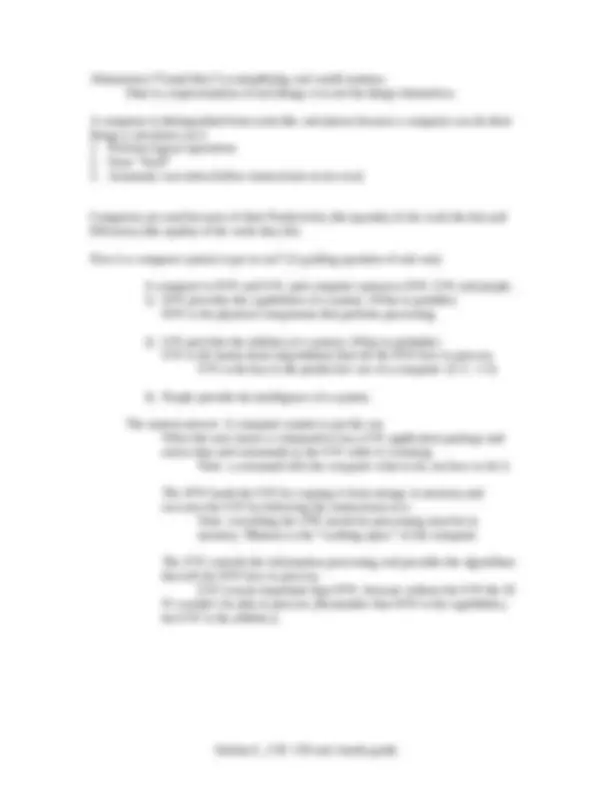



Study with the several resources on Docsity

Earn points by helping other students or get them with a premium plan


Prepare for your exams
Study with the several resources on Docsity

Earn points to download
Earn points by helping other students or get them with a premium plan
Community
Ask the community for help and clear up your study doubts
Discover the best universities in your country according to Docsity users
Free resources
Download our free guides on studying techniques, anxiety management strategies, and thesis advice from Docsity tutors
Material Type: Exam; Class: Foundations of Comp Science; Subject: Computer Science; University: Concordia University - Wisconsin; Term: Unknown 1989;
Typology: Exams
1 / 2

This page cannot be seen from the preview
Don't miss anything!


Study guide for the Unit One Exam in CSC 150 Watch out for “diapause” (a period of physiologically enforced dormancy between periods of activity) while studying for this exam! Computer science is the study of problem solving, and computers are tools for solving problems. A computer solves problems by processing data into information. A computer is H/W and S/W, and it can:
Abstraction (“Grand Idea”) is simplifying real world systems. Data is a representation of real things, it is not the things themselves. A computer is distinguished from tools like calculators because a computer can do three things a calculator can’t: